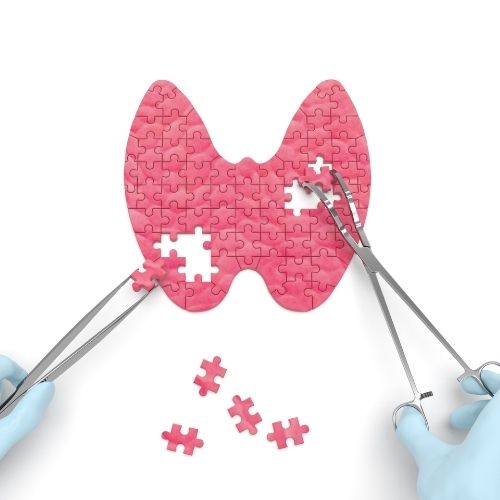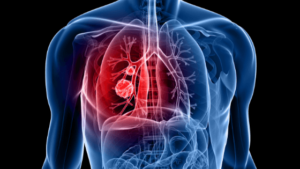What is Lip Cancer? What Are the Symptoms of Lip Cancer?
What is Lip Cancer?
Lip cancer occurs when the cancerous cells form on the lip skin. It can occur on the upper or lower lip but is generally seen on the lower lip. Lip cancer is accepted as a subtype of oral cancers, namely mouth cancers. The cell type seen in general is squamous cell carcinomas. With this structure, it is thought that cancer arises as flat and thin cells called squamous located in the middle and outer layers of the skin.
Risk factors for developing lip cancer are excessive exposure to sunlight and cigarette consumption. Eliminating these risks is in the hands of the individuals. In treatment planning, the removal of the cancer by surgical operation is generally performed. The small size of the cancer causes the surgical operation to be performed in a way that leaves a seemingly small effect. If the size of the cancer is large, a comprehensive surgery should be performed or different treatment plans should be made.
Types of Lip Cancer
Among the types of lip cancer, squamous cell cancers originating from the covering layer called epithelium that surrounds the lip surface, are commonly encountered. This type, also called epidermoid, is frequently encountered among cancers in regions such as mouth, larynx, and throat. Apart from this, adenoid cystic cancer and mucoepidermoid cancer that covers the surface of the lip and originates from microscopic glands, and cancer arising from melanoma that gives color to the skin are also seen. Apart from these, tumors may occur in the connective tissue, muscles and vessels that participate in the lip structure, although rare.
What are the Causes of Lip Cancer?
Long-term exposure to sunlight is a factor causes to the lip cancer. Apart from this, tanning in the solarium can also cause the risk of lip cancer.
What Cause Lip Cancer?
It’s thought that Lip cancer occurs as a result of DNA mutations caused by some factors such as long-term exposure to sunlight. Although the exact cause is not known, it occurs as a result of mutations in healthy cells. As a result of these DNA mutations, the cells begin to multiply uncontrollably and turn into tumors.
Lip Cancer Risk Factors
Risk factors of the lip cancer include smoking cigarettes, chewing tobacco, taking snuff, smoking cigars and other tobacco products. Not maintaining a light skin color, excessive exposure of the lips to sunlight, imbalance in the defense system and a weak immune system can also be included as risk factors
What Are the Symptoms of Lip Cancer?
Symptoms of lip cancer may include lip discoloration, mild swelling, non-healing sores, tingling on the skin of the lips or around the mouth, pain or numbness. If you have such findings and these symptoms continue for a long time, you should consult a doctor immediately.
Many visible irregularities in the lip can be an indication of the formation of lip cancer. Crusting on the lips, the occurrence of itching and peeling of the lip skin, as well as bleeding-like red stains are also the points to be considered about lip cancer. Masses and wart-like structures on the lip may also indicate the need for action. Open wounds may occur at some points, these herpes-looking structures cannot heal in a short time as in the process of herpes.
How is Lip Cancer Diagnosed?
Some tests and methods are applied to diagnose lip cancer and to obtain some information about certain characteristics.
Physical Examination
The physical examination will be the primary step when you first consult your doctor. At this stage, the lips, face, mouth and neck regions are examined and a trace of cancer is sought. At this point, different methods are used to determine the signs and symptoms.
Taking Tissue Sample for Testing
A tissue sample is taken from the body for determination and analysis of the suspicious region. This procedure is called “biopsy”. The samples taken are sent to the pathology laboratories to obtain information about the type of cancer, its features and the level of aggressiveness.
Imaging Methods
Cancer-related features are achieved with imaging methods. It is also checked whether the cancer has spread to a region other than the lip. These methods include imaging methods such as magnetic resonance, computed tomography and positron emission tomography. Although each imaging method has different details, the main purpose is to determine the tumor.
Is Early Diagnosis of Lip Cancer Possible?
If there is an image or swelling on your lip that you cannot explain and does not go away, you should consult a doctor immediately.
How is Lip Cancer Treated?
Methods such as surgery, radiotherapy, chemotherapy and immunotherapy are used in the treatment of lip cancer.
Surgery
It is the method applied by removing the lip cancer cells and some of the healthy tissue around it. The lip is repaired so that the functions can continue after the procedure. Apart from this, the aesthetic appearance is tried to be preserved by applying the techniques that can reduce scarring.
In this procedure, which can be easily performed in small-scale cancers, if the size of the cancer is large, it will be healthier to have the procedure performed by a Specialist in Plastic and Reconstructive Surgery. Tissue transplantation from a different part of the body to the region can also be done. If the lymph nodes in the neck have spread, these structures can also be removed during the surgical procedure.
Radiotherapy
It is the method applied by targeting high-energy rays like X-Ray, to the tumor region to kill the cancerous cells. Radiotherapy, also known as radiation therapy, can be applied as the only method or after surgery. If surgery is applied to a large region and causes cosmetic problems, radiotherapy may be preferred to surgery. In case of involvement of large tumors or lymph nodes in the neck, radiotherapy will be required after surgery, so simultaneous chemotherapy can be applied with direct radiotherapy in order not to increase the side effects or not to spoil the cosmetic appearance with extensive surgery. In the presence of squamous cell carcinoma, concomitant cisplatin-based chemotherapies are also given routinely. Immunotherapy or smart drugs are the treatments that have been researched in recent years. Ideally, to decide which treatment is appropriate, it would be to investigate whether there is a patient-specific mutation with gene tests.
Is lip cancer fatal?
If lip cancer is detected especially in early stages, it can easily be treated with the regional treatments, radiotherapy or surgery. However, since it will be necessary to use a few of the radiotherapy, chemotherapy and surgical treatments in more advanced stages, the patient’s quality of life may deteriorate and the response to treatment may decrease. For this reason, when you notice a change in your lips, it is necessary to consult a doctor without delay.
How is Lip Cancer treated?
The healing process can be a bit challenging as it is in a region visible and provides speech and eating functions. However, it should not be forgotten that it is a generally treatable disease. The most important issue in treatment is early diagnosis.
Lip Cancer Prevention Ways
In order to avoid the risk of lip cancer, you need to pay attention to some things in your life. You can apply the following methods to reduce the risk.
If you use tobacco and its products, it is recommended that you quit. Tobacco use triggers cancer-causing mutations in the lips and exposes healthy cells to dangerous chemicals.
Traditionally, it is recommended to be exposed to the sun as little as possible, especially at noon, but let’s not forget that vitamin D is mostly synthesized between 12.00-14.00 and vitamin D has many protective functions. Solarium can also trigger the formation of cancerous cells due to the UV rays it emits. At this point, staying away from the solarium will be a useful option.








